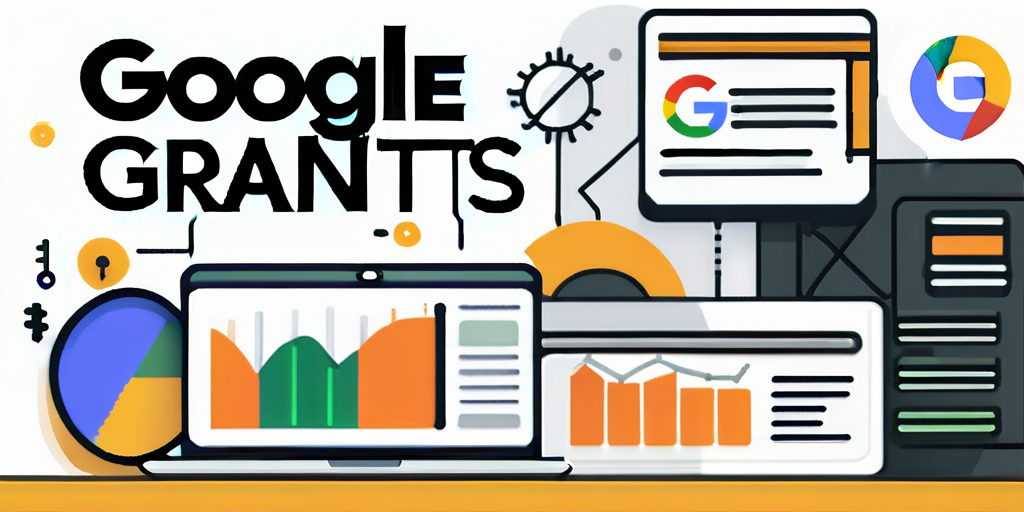The Ultimate Guide to Google Ad Grants: Maximizing Nonprofit Advertising Potential

Google Ad Grants is a powerful program that allows nonprofit organizations to access up to $10,000 USD per month in free advertising on Google Ads. This guide will provide a comprehensive overview of Google Ad Grants and offer valuable insights and strategies to help nonprofits maximize their advertising potential and drive meaningful impact.
Understanding Google Ad Grants
What are Google Ad Grants?
Google Ad Grants is a part of Google for Nonprofits, a program that helps nonprofits achieve their goals by providing access to various Google products and services. Ad Grants specifically focuses on helping nonprofits raise awareness, engage supporters, and drive website traffic through online advertising.
Eligibility Criteria for Google Ad Grants
Before diving into the details of Google Ad Grants, it’s important to understand the eligibility requirements. To be eligible for the program, nonprofits must have valid charity status in their country, maintain a functioning website with substantial content, and meet other specific criteria laid out by Google.
The Application Process
Applying for Google Ad Grants involves a straightforward process, but it’s essential to provide accurate and detailed information about your organization’s mission, goals, and impact. Google reviews each application to ensure that nonprofits meet the eligibility criteria and have a compelling case for utilizing the grant effectively.
Once you have submitted your application, the waiting game begins. Google carefully reviews each application to ensure that the nonprofit meets the necessary criteria. This thorough review process ensures that the grants are awarded to organizations that will make the most of the opportunity.
During the review process, Google assesses the nonprofit’s website to determine if it meets the substantial content requirement. This means that the website must have enough relevant and informative content to engage visitors and provide value. It’s important to invest time and effort into creating a website that showcases your organization’s mission, impact, and goals.
Additionally, Google evaluates the nonprofit’s mission and goals to ensure that they align with the purpose of the Ad Grants program. They want to see that the organization is dedicated to making a positive impact and that the grant will be used effectively to further their cause.
Navigating the Google Ad Grants Program
Key Features of Google Ad Grants
Once accepted into the program, nonprofits gain access to several key features that can significantly enhance their advertising efforts. These features include the ability to create text ads, display ads, and video ads, as well as the ability to target specific keywords and geographic locations.
Text ads are a popular choice among nonprofits as they allow for concise and impactful messaging. With the ability to create compelling headlines and descriptions, nonprofits can effectively communicate their mission and drive engagement.
Display ads, on the other hand, offer a visually appealing way to capture the attention of potential supporters. Nonprofits can showcase their impact through eye-catching images and graphics, making it easier to convey their message and create a lasting impression.
Video ads have also become increasingly popular in recent years. Nonprofits can leverage this format to tell their story in a more dynamic and engaging way. By combining visuals, audio, and storytelling, video ads have the power to evoke emotions and inspire action.
Additionally, the ability to target specific keywords and geographic locations allows nonprofits to reach their desired audience effectively. By selecting relevant keywords and specifying geographic areas, nonprofits can ensure that their ads are shown to people who are most likely to be interested in their cause.
Understanding the AdWords Interface
The AdWords interface is where nonprofits can build and manage their advertising campaigns. It’s essential to familiarize yourself with the different features and tools available, such as keyword research tools, ad scheduling, and campaign performance metrics.
Keyword research tools are invaluable in helping nonprofits identify the most relevant and effective keywords to target. By understanding what keywords potential supporters are using in their searches, nonprofits can optimize their campaigns to increase visibility and attract the right audience.
Ad scheduling is another crucial feature that nonprofits should take advantage of. By strategically scheduling ads to appear at specific times of the day or week, nonprofits can maximize their reach and ensure that their ads are seen by the right people at the right time.
Campaign performance metrics provide valuable insights into the effectiveness of your ads. By monitoring metrics such as click-through rates, conversion rates, and cost per click, nonprofits can measure the success of their campaigns and make data-driven decisions to optimize performance.
Setting Up Your First Campaign
Creating an effective campaign requires careful planning and strategizing. Start by defining your campaign goals and identifying target keywords related to your nonprofit’s mission and programs. Develop compelling ad copy and select appropriate landing pages to drive relevant traffic to your website.
When defining your campaign goals, it’s important to be specific and measurable. Whether your goal is to increase donations, raise awareness, or drive volunteer sign-ups, having a clear objective will help guide your campaign strategy and measure its success.
Once you have identified your target keywords, it’s time to craft compelling ad copy. Your ad copy should be concise, persuasive, and aligned with your campaign goals. By highlighting the unique aspects of your nonprofit and its impact, you can capture the attention of potential supporters and encourage them to take action.
Finally, selecting appropriate landing pages is crucial to ensure a seamless user experience. Landing pages should be relevant to the ad content and provide visitors with the information they are seeking. By optimizing landing pages for conversions, nonprofits can increase the likelihood of turning ad clicks into meaningful actions.
Maximizing Your Google Ad Grant
Best Practices for Nonprofit Advertising
To make the most of your Google Ad Grant, it’s crucial to follow best practices for nonprofit advertising. This includes conducting thorough keyword research, creating compelling ad copy, optimizing landing pages, and continuously testing and refining your campaigns for better performance.
When it comes to conducting keyword research, it’s important to go beyond the basics. Take the time to explore long-tail keywords that are specific to your nonprofit’s mission and target audience. These keywords can help you reach a more qualified audience and increase the chances of conversions. Additionally, consider using keyword research tools like Google Keyword Planner or SEMrush to uncover new keyword opportunities and gain insights into search volume and competition.
Optimizing Your Ad Campaigns
Optimization is key to ensuring that your ad campaigns are driving meaningful results. Regularly review and analyze your campaign performance metrics and make data-driven optimizations. This may include adjusting bidding strategies, refining keyword targeting, and improving ad quality and relevance.
When refining keyword targeting, consider using match types to control how closely your ads match user search queries. Broad match allows your ads to show for a wider range of search queries, while exact match ensures that your ads only appear for specific search terms. By strategically using different match types, you can strike a balance between reach and relevance.
Tracking and Analyzing Performance
Effective tracking and analysis of campaign performance are crucial for understanding how your ads are performing and identifying areas for improvement. Utilize the tracking capabilities within Google Ads and Google Analytics to monitor key metrics such as click-through rates, conversions, and return on ad spend.
In addition to tracking basic metrics, consider implementing conversion tracking to measure specific actions that are valuable to your nonprofit, such as donations or newsletter sign-ups. By tracking these conversions, you can gain deeper insights into the effectiveness of your campaigns and make informed decisions on how to allocate your ad spend.
Furthermore, don’t forget to take advantage of Google Analytics’ advanced features, such as goal tracking and attribution modeling. These features can provide valuable insights into the customer journey, allowing you to understand which touchpoints are driving the most conversions and optimize your campaigns accordingly.
Troubleshooting Common Issues
Addressing Low Click-Through Rates
If you’re experiencing low click-through rates, it’s important to evaluate your ad copy, targeting, and keyword relevance. Make sure your ads are compelling and aligned with the search intent of your target audience. Refine your targeting criteria and experiment with different keywords and ad variations to improve performance.
Improving Ad Relevance and Quality Score
Google assigns a Quality Score to each keyword in your campaign, which influences your ad’s position and cost-per-click. To improve ad relevance and Quality Score, create tightly themed ad groups, use relevant keywords, and ensure that your landing pages provide valuable and relevant content to users.
Dealing with Suspension and Reactivation
In some cases, nonprofits may face account suspension due to policy violations or noncompliance with program guidelines. If your account is suspended, carefully review the suspension notification from Google and make the necessary adjustments to address the issue. Google provides resources and support to help nonprofits reactivate their accounts and get back on track.
In conclusion, Google Ad Grants presents a unique opportunity for nonprofit organizations to expand their reach and make a greater impact through online advertising. By understanding the program, navigating its features, and implementing best practices, nonprofits can maximize their advertising potential and achieve their goals effectively. Google Ad Grants is a valuable resource that can empower nonprofits to promote their missions, engage with supporters, and drive meaningful change in the world.
Ready to take your nonprofit’s digital presence to the next level? BlueWing is here to help you harness the power of the Google Ad Grants program and beyond. With our expertise in paid media management and a commitment to driving sustainable growth, we’ll ensure your organization stands out in the digital landscape. Experience the difference with our hands-on approach and weekly updates, keeping you informed every step of the way. Contact us today to learn how we can amplify your impact and exceed industry benchmarks together.





